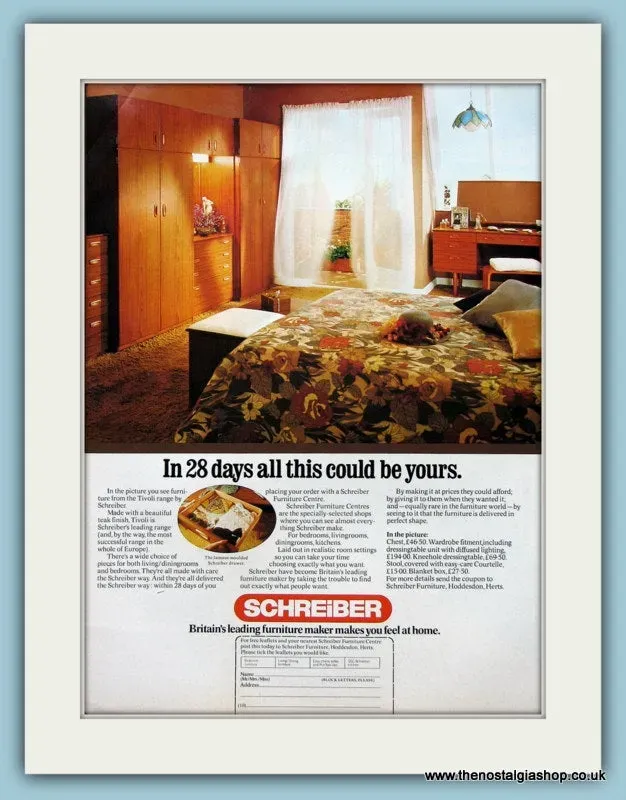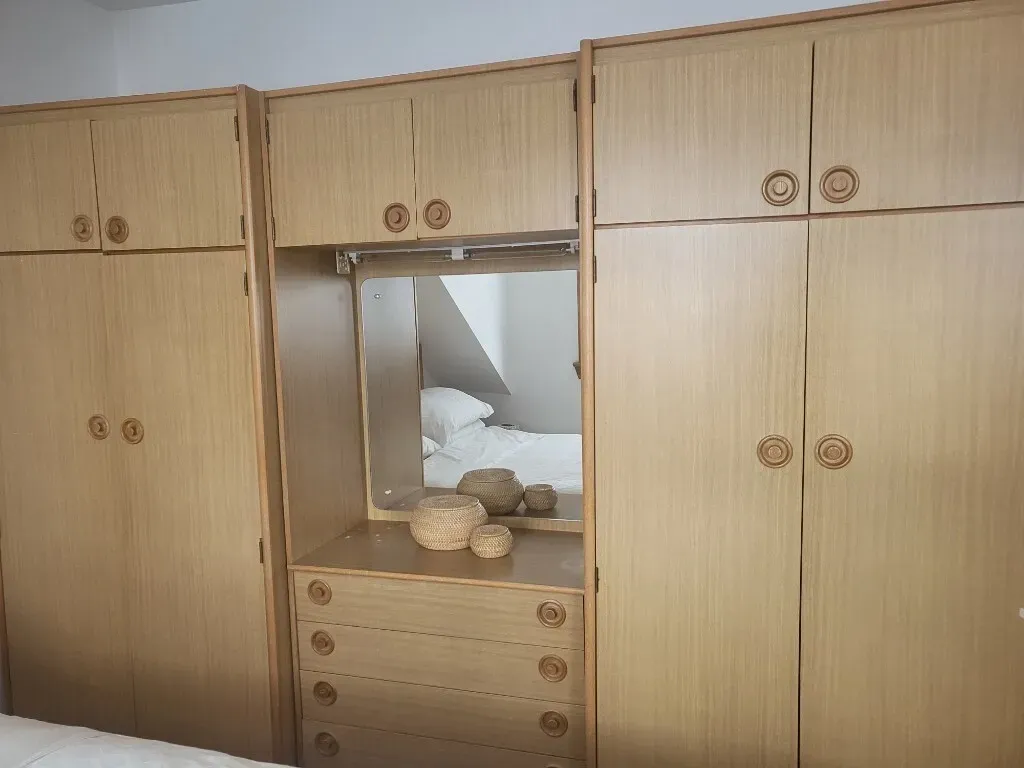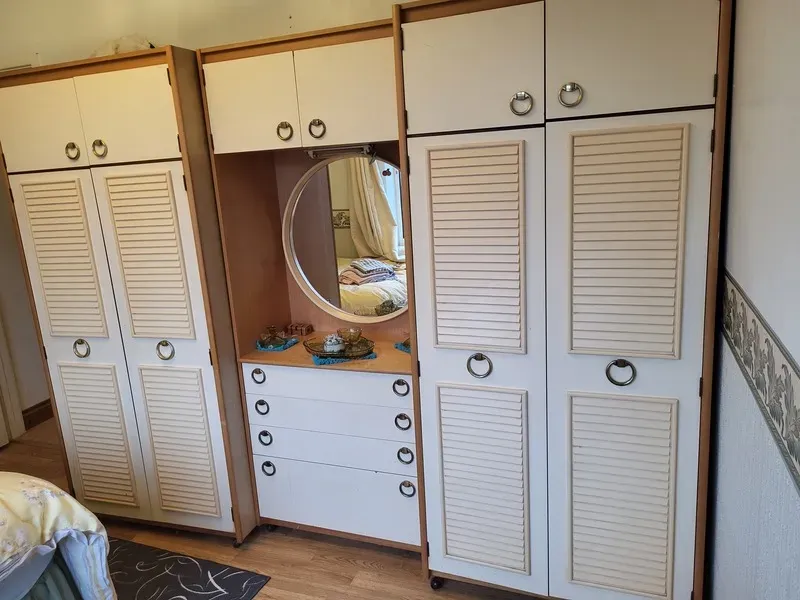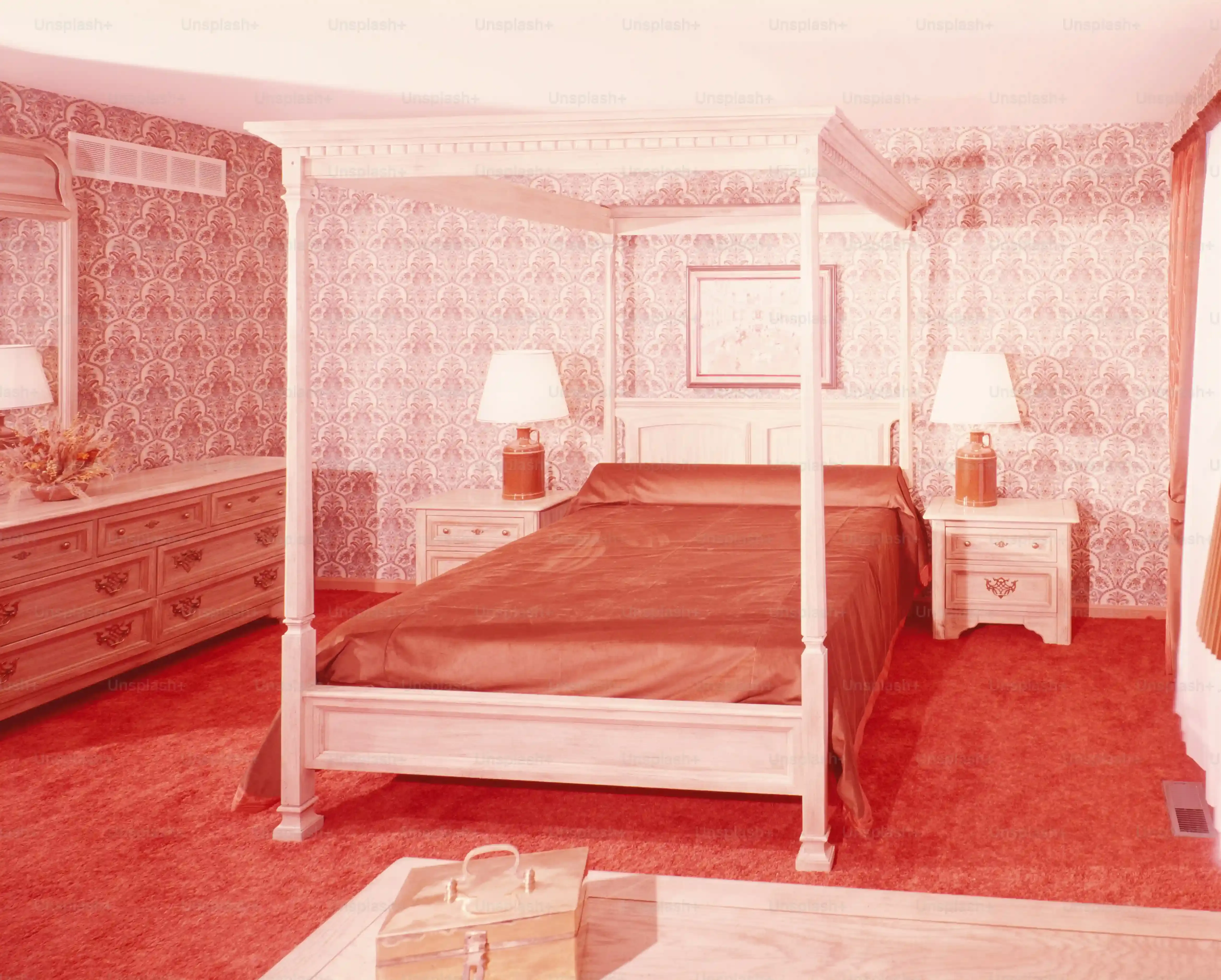Table of Contents
Remember those bedrooms from the 1970s? Maybe yours had that distinctive look, clean lines, warm wood tones, perhaps a bit of a space-age feel mixed with earthy vibes. If that brings back a memory, you might be thinking about 1970s Schreiber bedroom furniture. Schreiber was everywhere back then, fitting out countless homes with furniture that felt modern yet accessible. It wasn't high-end designer stuff, but it was well-made, stylish for the time, and built to last.
Identifying Your 1970s Schreiber Bedroom Furniture Style
Identifying Your 1970s Schreiber Bedroom Furniture Style
Spotting the Signature Look
So, you're wondering if that chest of drawers hiding in the attic or the wardrobe you saw at a flea market is actually 1970s Schreiber bedroom furniture? It's not always stamped with a big logo, but these pieces have a pretty distinct vibe. Think clean lines, often with rounded edges, and a focus on functional design. The materials are typically wood veneer, most commonly teak or afromosia, which gives that warm, mid-brown tone that screams the 70s. You'll rarely find elaborate carvings or fussy details; Schreiber was all about accessible modernity.
Look for recessed handles or simple, often rectangular or circular, metal pulls. The construction feels solid, not flimsy. Drawers usually run on simple wooden runners, sometimes a bit stiff after fifty years, but they weren't built with fancy ball-bearing slides. The overall impression is understated quality – furniture designed for everyday life, built to last through avocado green kitchens and shag carpets.
Key Design Elements to Watch For
Beyond the wood type and general shape, specific details can help pinpoint 1970s Schreiber bedroom furniture. Check the legs – they are often tapered or block-like, sometimes with a slight splay. Wardrobes frequently feature full-length mirrors integrated into the doors. Dressing tables often have a simple, rectangular mirror and perhaps a hidden drawer or two. Bedside cabinets are usually compact squares or rectangles, sometimes with a single drawer and open shelf below.
Don't expect dovetail joints everywhere; Schreiber used methods that were efficient for mass production but still sturdy, like mortise and tenon or reinforced butt joints. Peeking inside drawers, you might see particleboard bases, a common material for the era. The key is the combination of these simple, functional elements with the characteristic warm wood veneer and minimalist hardware. It’s a look that’s less flamboyant than some other 70s styles, leaning more towards practicality with a touch of Scandinavian influence.
Common features of 1970s Schreiber bedroom furniture:
- Warm teak or afromosia veneer
- Clean lines, often with rounded corners
- Simple, recessed, or minimalist metal handles
- Tapered or block legs
- Solid, functional construction
- Integrated mirrors on wardrobes
- Particleboard drawer bases
Why This MidCentury ModernLite Furniture Endures
Why This MidCentury ModernLite Furniture Endures
It Was Built to Last, Sort Of
Let's be honest, 1970s Schreiber bedroom furniture wasn't handcrafted by elves in a magical forest. It was furniture for the masses, made efficiently. But here's the thing: efficient back then often meant using actual wood veneer over solid cores or decent particleboard, not the paper-thin laminate over air pockets you sometimes see today. These pieces have survived decades of moves, kids, and questionable decorating choices.
They weren't delicate. You could bump into a Schreiber dresser, and it wouldn't crumble into dust. The drawers, while simple, generally stayed on their runners. The finishes, often a tough lacquer, held up reasonably well against spills and sunlight. This inherent sturdiness, a byproduct of the manufacturing standards of the time compared to some later eras, means a lot of it is simply still around and functional.
The Style Just... Works
Mid-Century Modern had its peak earlier, but Schreiber took those clean lines and simplified them for the mainstream 70s home. This "Mid-Century Modern-Lite" approach, with its warm teak tones and minimal fuss, turns out to be surprisingly timeless. It’s not tied to overly specific trends, unlike say, ornate Victorian or chunky 80s laminate.
These pieces blend in. They don't demand attention but provide a quiet backdrop. In a world cluttered with fast furniture, the simple form and warm wood of 1970s Schreiber bedroom furniture offer a sense of calm and authenticity. It slots neatly into modern minimalist spaces, pairs well with other vintage finds, and doesn't clash with contemporary art or textiles. It's the furniture equivalent of a reliable neutral sweater.
Why people still seek out this furniture:
- Solid, durable construction (for its class)
- Timeless, adaptable design
- Warm, natural wood tones
- Often readily available
- More affordable than high-end MCM
- Carries a sense of nostalgia and history
Affordability and Availability Help
Unlike the truly iconic, high-value pieces from the peak of Mid-Century Modern design, 1970s Schreiber bedroom furniture remains relatively accessible. It was produced in vast quantities, meaning there's still a good supply floating around in attics, garages, charity shops, and online marketplaces. You aren't competing with international collectors driving prices into the stratosphere.
This makes it a practical entry point for someone wanting genuine vintage furniture without taking out a second mortgage. Sure, pristine examples fetch decent money, but finding a solid dresser or wardrobe needing a little TLC is still quite possible and won't empty your wallet. It's vintage you can actually use, not just look at.
Hunting Down and Caring for 1970s Schreiber Bedroom Furniture
Hunting Down and Caring for 1970s Schreiber Bedroom Furniture
Alright, so you're sold on the idea of snagging some of this cool, understated 1970s Schreiber bedroom furniture. Where do you even start hunting? Forget fancy antique shops charging a fortune. Your best bets are often online marketplaces like eBay or Gumtree, local charity shops, house clearances, and maybe even asking older relatives if they have anything gathering dust. Condition varies wildly. You might find a pristine piece someone barely used, or something that looks like it survived a wrestling match with a badger. Be realistic about what you're buying – it's fifty years old. Scratches, dings, and faded patches are common. Caring for it usually involves simple steps: a good clean with mild soap and water, followed by a furniture polish designed for veneer. For deeper scratches or worn finishes, you might need to consider gentle sanding and re-oiling or re-lacquering, but start simple. Sometimes, just a thorough cleaning and a bit of polish work wonders, bringing that warm teak glow back to life.
More Than Just a Place to Sleep: The Legacy of Schreiber
More Than Just a Place to Sleep: The Legacy of Schreiber
More Than Just Furniture
Beyond simply holding your clothes and providing a surface for a lamp, 1970s Schreiber bedroom furniture played a quiet but significant role in British homes. It wasn't aspirational design you saw in glossy magazines, but the stuff real people bought with their hard-earned money. It represented a move towards more modern living for the average family, leaving behind bulkier, more traditional styles for something lighter, brighter, and easier to clean. Schreiber made decent design accessible, proving you didn't need to be wealthy to have furniture that felt contemporary and looked good.
These pieces are more than just wood and veneer; they hold memories. Think of all the late-night talks, the morning rush to get ready for school or work, the quiet moments reading in bed that happened around this furniture. It’s a tangible link to the past, a piece of social history sitting right there in your bedroom. It tells a story about how people lived, what they valued in their homes, and the kind of design that shaped everyday environments for millions.
What does your vintage furniture say about the era it came from?
- Reflects mass-market design trends
- Indicates focus on functionality and durability
- Suggests changing tastes away from traditional styles
- Represents accessible modernity for the average consumer
- Carries the weight of everyday domestic history
The Enduring Appeal of 70s Schreiber
So, there you have it. 1970s Schreiber bedroom furniture isn't just dusty relics in an attic; it's furniture with a history, built at a time when 'flat pack' wasn't the only option. It offered style that was current without being outlandish, and construction that generally holds up better than some modern equivalents. Finding these pieces takes a bit of effort, and they might need a little TLC, but the result is a bedroom that avoids the generic showroom look. It’s a practical way to add character and a solid bit of furniture to your home, proving that sometimes, the best finds aren't brand new.
